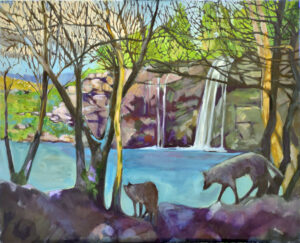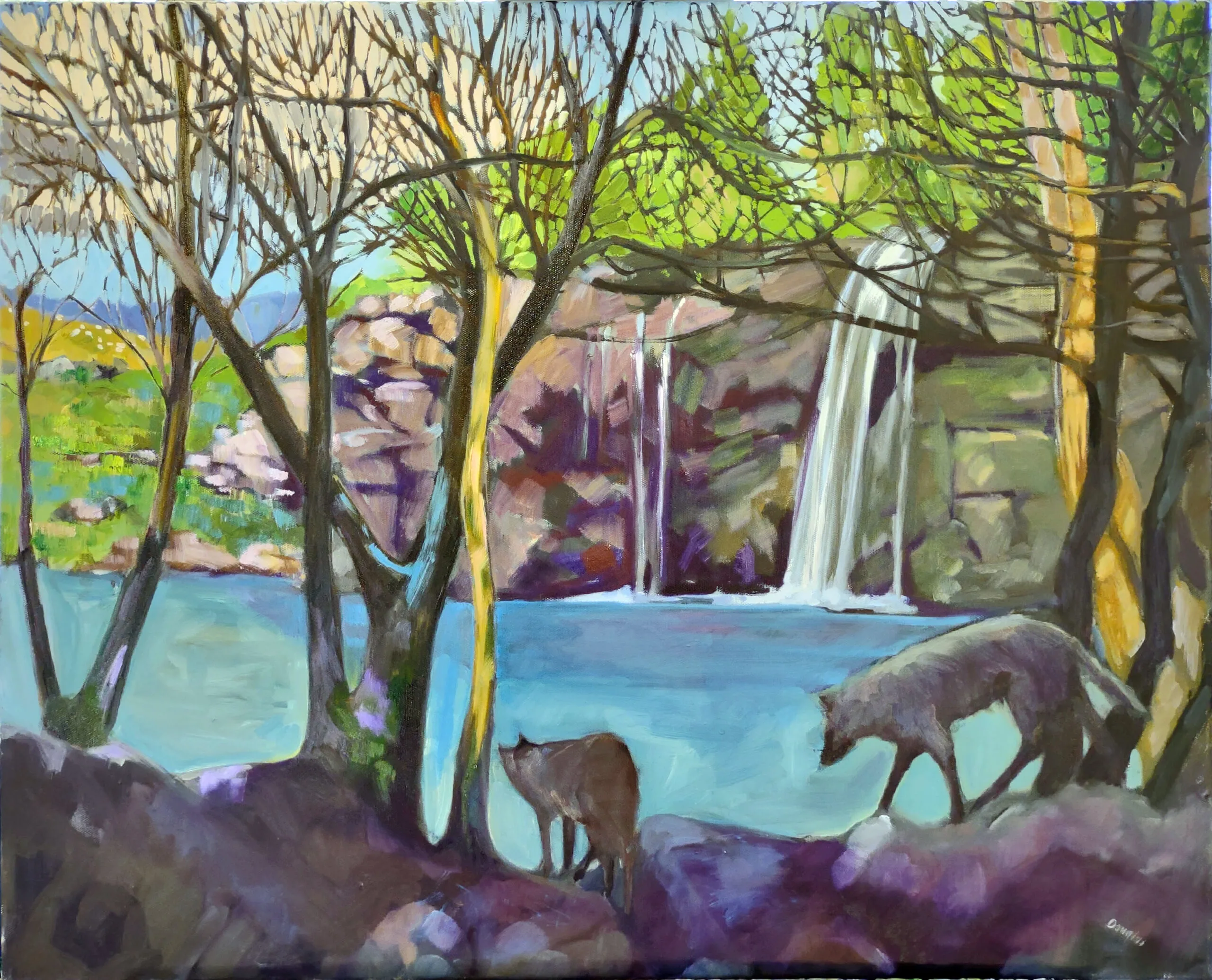
I painted Ravenous Wolves, above, at a low point in my life. I was coming to grips with the clay feet of people I’d once respected. My mother had died after a long dance with Parkinson’s dementia. I was trying to find my place in a new church, after leaving another in disgust.
The image of ravening wolves is used in Matthew 7:15: “Beware of false prophets, who come to you in sheep’s clothing, but inwardly they are ravenous wolves.”
However, I based this picture on Ezekiel 34, which uses the vulnerability of scattered sheep as a symbol of our own exposure: “…because my flock… has been plundered and has become food for all the wild animals, and because my shepherds did not search for my flock but cared for themselves rather than for my flock…”
The life of a shepherd during the Biblical era must have been rather taxing. The Bible mentions adders, asps, wild oxen, rhinoceros, bears, wild boars, crocodiles, jackals, hyenas, leopards, lions, scorpions, wild dogs, wolves and predatory birds. It’s no wonder that David was an ace with his slingshot.
I watched a pack of wolves lope across a meadow near the South Fork of the Shoshone River in Wyoming last week. They’re undeniably beautiful, but they’re also apex predators. They pose a danger to livestock and pets.
From the settlement of the Massachusetts Bay Colony to the modern era, there were wolf bounties in North America. That caused their near-extirpation. We’ve wisely stopped that, since it was both inhumane and foolish. However, to some degree the pendulum has swung hard toward romanticizing wolves. In 2010 a woman was attacked and killed by a wolf in Alaska, and wolves remain a real danger in Asia (which is why they’re a recurring motif in Russian art and literature.)
Of course, those numbers pale in comparison to attacks by domesticated dogs, which kill 30 to 50 people in the United States every year.
I don’t think you should take up wolf-hunting-for one thing, it’s illegal except in very limited areas. But we should recognize that wolves are not the furry, cute elder brother of the domesticated dog. They wouldn’t think twice about eating your baby if you were foolish enough to leave it outdoors. That’s why they are metaphors for danger in art and literature ranging from the Bible to Dr. Zhivago.
There was no reference material for this painting; it all came out of my mind. These are the paintings I love the best, although I’m sure there are all kinds of subconscious cues in them that would embarrass me if I understood them.
And, by the way, if you get past the wolves, you reach the sunny uplands where the flock are grazing. It’s almost like a video game, isn’t it?
My 2024 workshops:
- Painting in Paradise: Rockport, ME, July 8-12, 2024.
- Sea & Sky at Schoodic, August 4-9, 2024.
- Find your authentic voice in plein air: Berkshires, August 12-16, 2024.
- Art and Adventure at Sea: Paint Aboard Schooner American Eagle, September 15-19, 2024.
- Immersive In-Person Workshop: Rockport, ME, October 7-11, 2024.


Such a pleasure to read you are!
Symbolism, interpretation, from the Bible to Dr.Zhivago. I am able to visualize your words and to see
your strokes of interpretation.
Common sense is so necessary for survival.
Have a great day!
Wow. This is quite a story on so many levels. I think painting is a way of understanding our subconscious. Fascinating work Carol. As always, I am a fan of your Art.
Thank you both for your kind words.